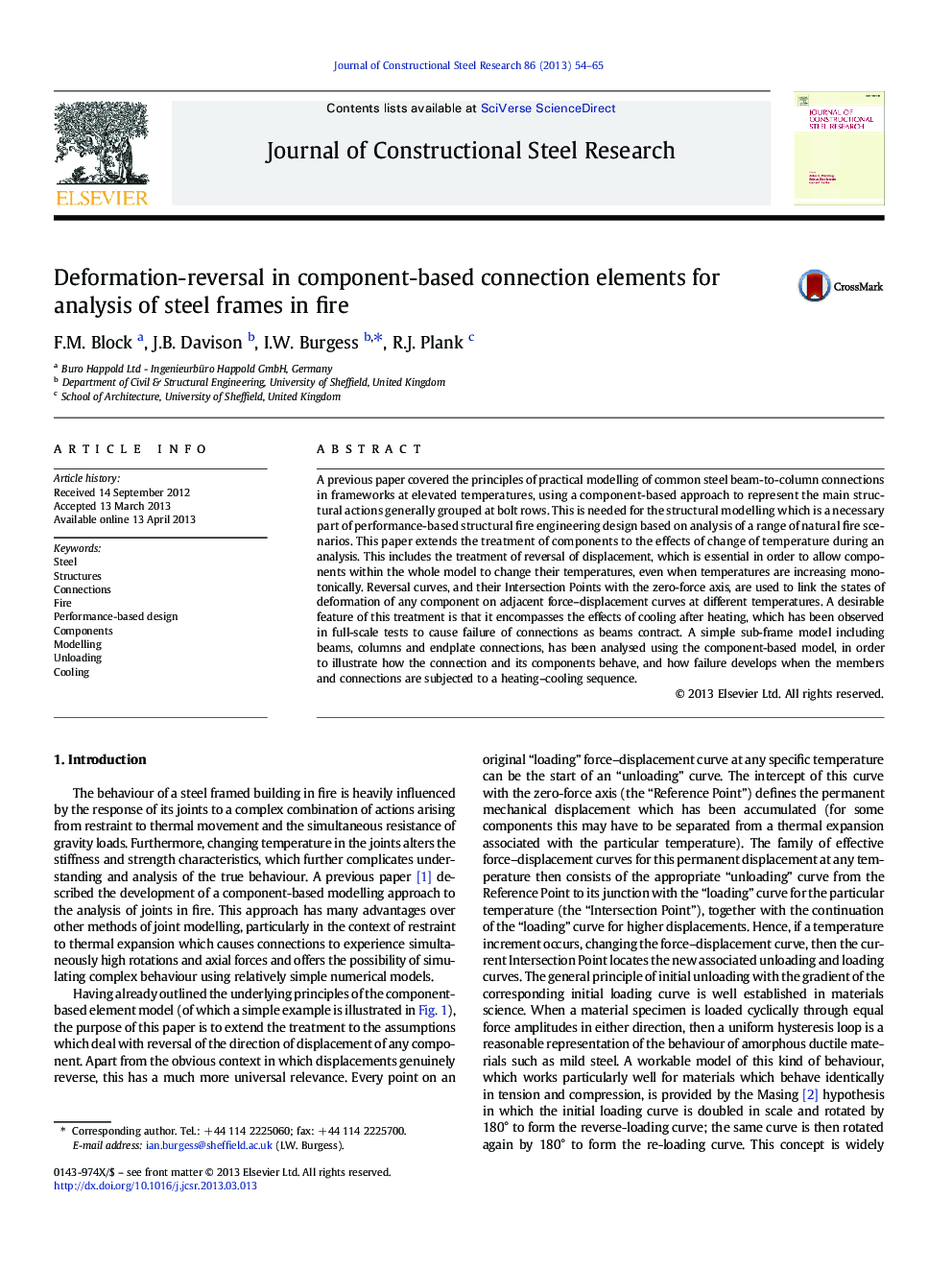| Article ID | Journal | Published Year | Pages | File Type |
|---|---|---|---|---|
| 284957 | Journal of Constructional Steel Research | 2013 | 12 Pages |
•Component treatment is extended to the effect of temperature change during analysis.•This includes the treatment of reversal of displacement.•Reversal curves link deformations of components at different temperatures.•A sub-frame model illustrates how failure develops in a heating–cooling sequence.
A previous paper covered the principles of practical modelling of common steel beam-to-column connections in frameworks at elevated temperatures, using a component-based approach to represent the main structural actions generally grouped at bolt rows. This is needed for the structural modelling which is a necessary part of performance-based structural fire engineering design based on analysis of a range of natural fire scenarios. This paper extends the treatment of components to the effects of change of temperature during an analysis. This includes the treatment of reversal of displacement, which is essential in order to allow components within the whole model to change their temperatures, even when temperatures are increasing monotonically. Reversal curves, and their Intersection Points with the zero-force axis, are used to link the states of deformation of any component on adjacent force–displacement curves at different temperatures. A desirable feature of this treatment is that it encompasses the effects of cooling after heating, which has been observed in full-scale tests to cause failure of connections as beams contract. A simple sub-frame model including beams, columns and endplate connections, has been analysed using the component-based model, in order to illustrate how the connection and its components behave, and how failure develops when the members and connections are subjected to a heating–cooling sequence.
